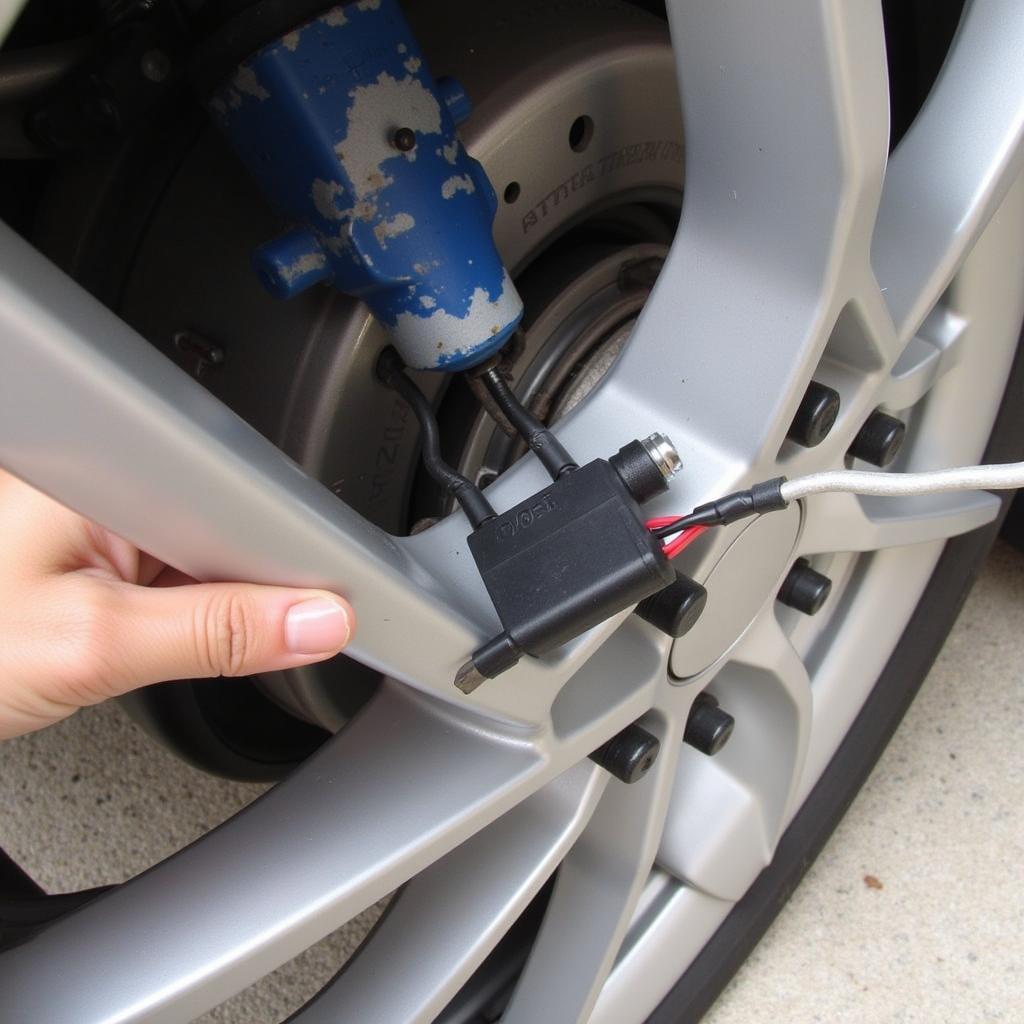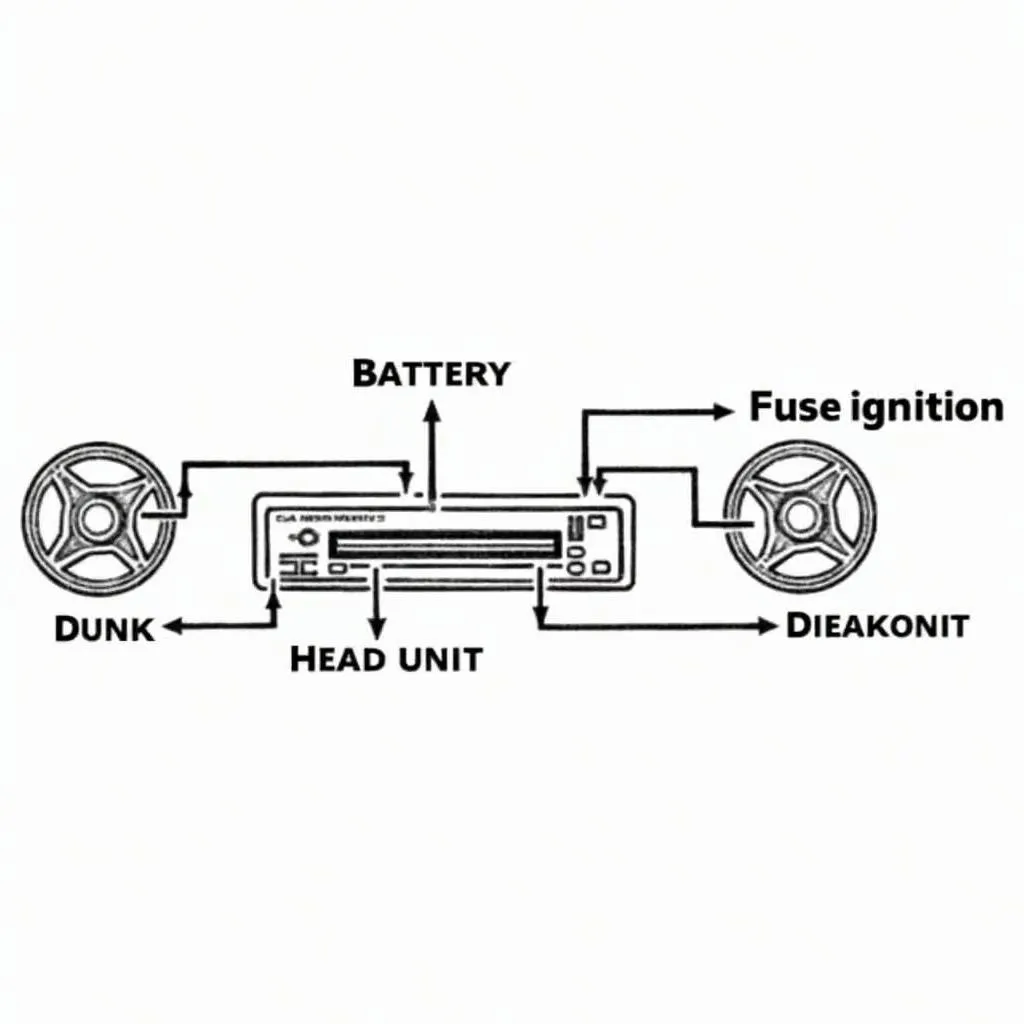If you’re driving a Mazda CX-9 and see the oil warning light flash while braking, don’t panic just yet. While this situation might seem alarming, it doesn’t always signal a catastrophic engine failure. This article delves into the potential reasons behind this issue and provides insightful solutions to help you get back on the road safely and confidently.
Understanding Your Mazda CX-9’s Oil Warning System
Before exploring specific causes, it’s essential to understand what triggers the oil warning light. This light doesn’t solely indicate low oil levels; it’s a broader warning system tied to your CX-9’s oil pressure. When the light illuminates, it indicates a drop in oil pressure, which could stem from various factors beyond simply needing an oil top-up.
Common Causes of Oil Warning Light Flashing When Braking
Here’s a breakdown of the most common culprits behind the oil warning light illuminating while applying the brakes in your Mazda CX-9:
1. Low Oil Level
The most straightforward explanation is often the most likely. A low oil level naturally leads to decreased oil pressure, especially during braking when the oil can slosh forward in the pan, momentarily depriving the oil pump of adequate fluid.
Solution: Check your CX-9’s oil level using the dipstick. If it’s below the minimum mark, top it up with the recommended oil grade for your model.
2. Faulty Oil Pressure Sensor
Sometimes, the issue might not be the oil itself but the sensor responsible for measuring its pressure. A malfunctioning sensor can send inaccurate signals, triggering the warning light even if the oil level and pressure are within the normal range.
Solution: Have a mechanic inspect the oil pressure sensor. If it’s faulty, replacing it should resolve the issue.
3. Worn Oil Pump
The oil pump plays a crucial role in circulating oil throughout the engine. If it’s worn out or failing, it won’t be able to maintain adequate oil pressure, especially during actions like braking that can cause oil to shift within the engine.
Solution: Diagnosing a failing oil pump often requires a mechanic’s expertise. If confirmed, replacing the oil pump is essential to prevent potential engine damage.
4. Blocked Oil Pickup Tube
The oil pickup tube sits submerged in the oil pan, drawing oil to be circulated by the pump. Over time, sludge, debris, or even a dislodged oil pan gasket piece can obstruct the tube, restricting oil flow and causing pressure drops.
Solution: Addressing a blocked oil pickup tube typically involves removing the oil pan to clean or replace the tube. This task is best handled by a qualified mechanic.
5. Worn Engine Bearings
Engine bearings ensure smooth movement of internal components. When these bearings wear down, clearances increase, affecting oil pressure. This issue often manifests as a flickering oil light during acceleration or deceleration, including braking.
Solution: Worn engine bearings require immediate attention. A mechanic needs to assess the severity and recommend the appropriate course of action, which might involve bearing replacement or, in severe cases, engine rebuild or replacement.
Remote Diagnostics and Software Solutions
In some instances, the oil warning light might be triggered by software glitches within your CX-9’s engine control unit (ECU).
“Remote diagnostics and software recalibration are becoming increasingly valuable tools for addressing vehicle issues,” explains automotive electronics expert James O’Connell. “These technologies allow us to pinpoint software-related faults and implement solutions without always needing physical access to the vehicle.”
If you suspect a software-related issue, consult a specialist offering remote diagnostics and programming for Mazda vehicles. They can analyze your car’s ECU for errors and install necessary software updates to potentially resolve the problem.
Conclusion
An oil warning light illuminating while braking in your Mazda CX-9 signals a potential issue that shouldn’t be ignored. While low oil is a common cause, various other mechanical or electrical faults could be at play. This guide has outlined the most likely culprits and offered potential solutions. However, remember that seeking professional help is always recommended for accurate diagnosis and repair.
By addressing the issue promptly and ensuring your CX-9 receives proper maintenance, you can help prevent further damage and ensure its longevity.


